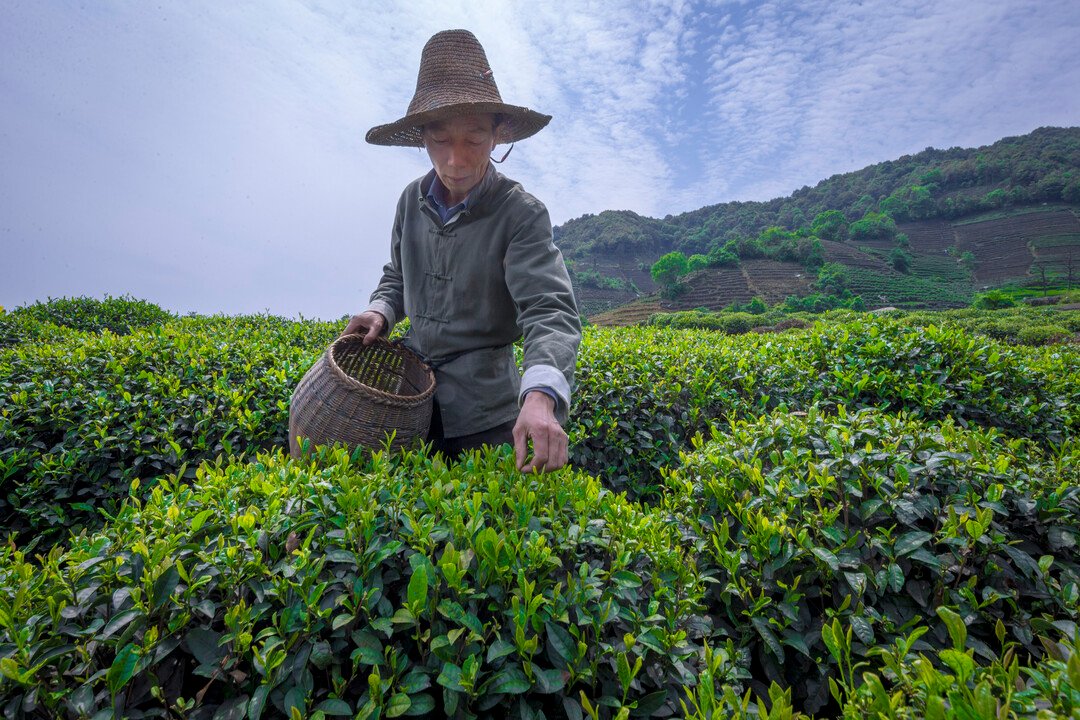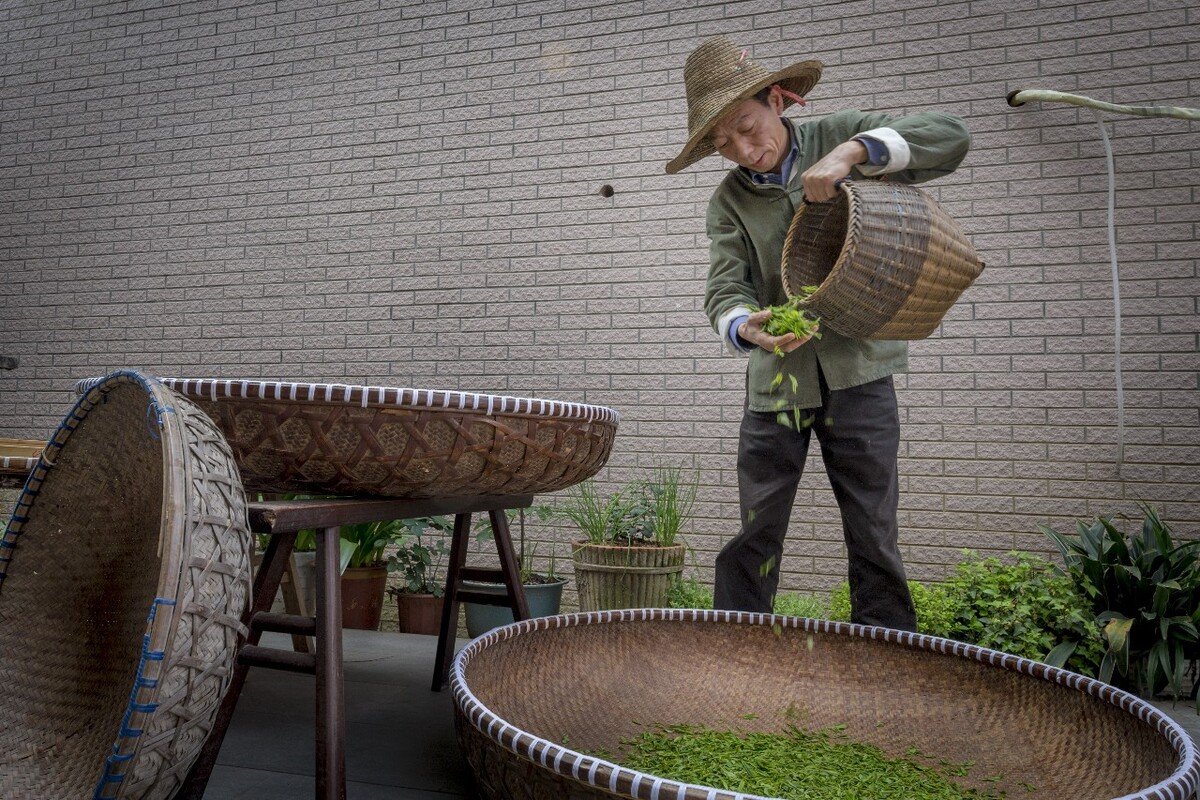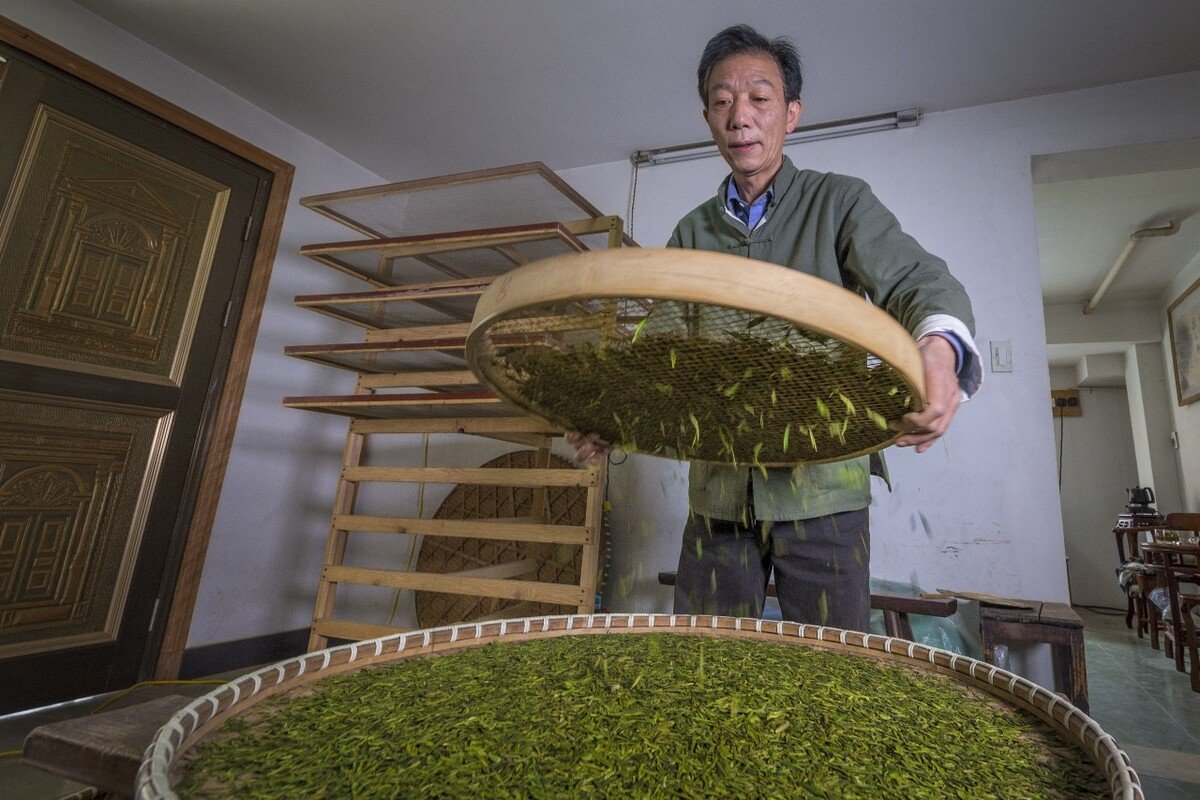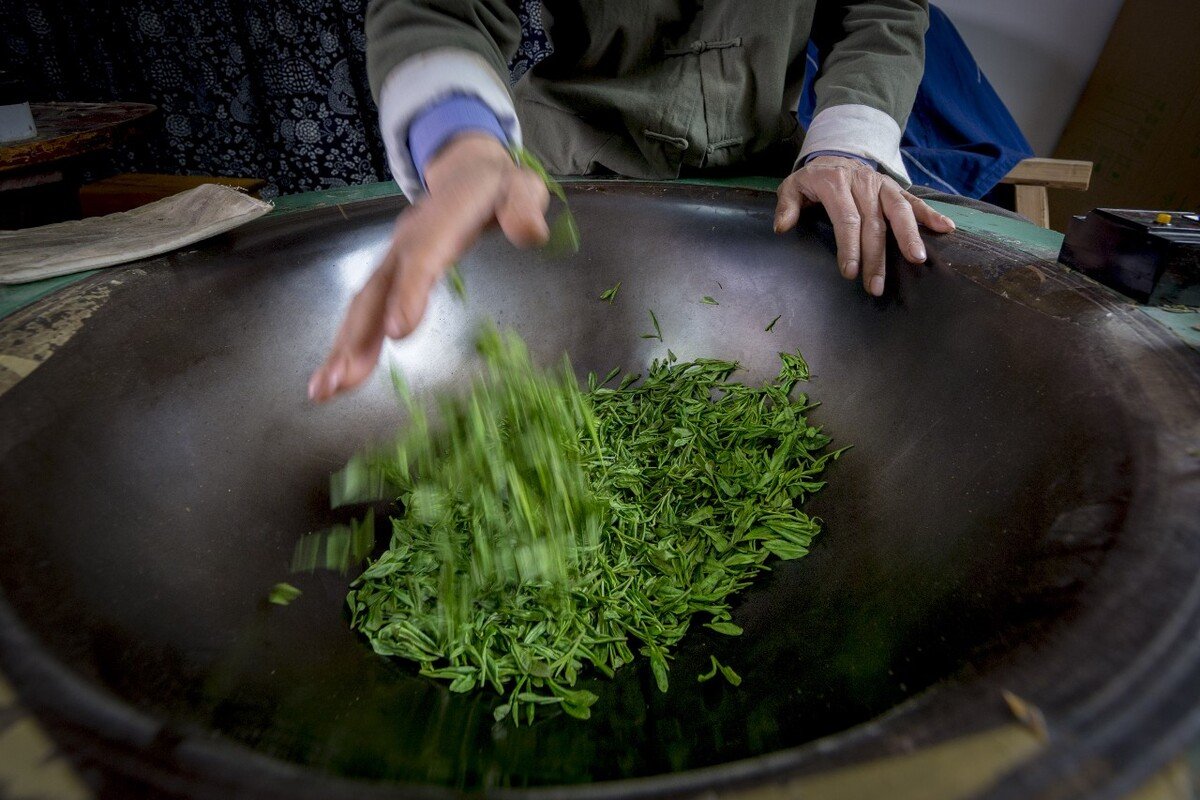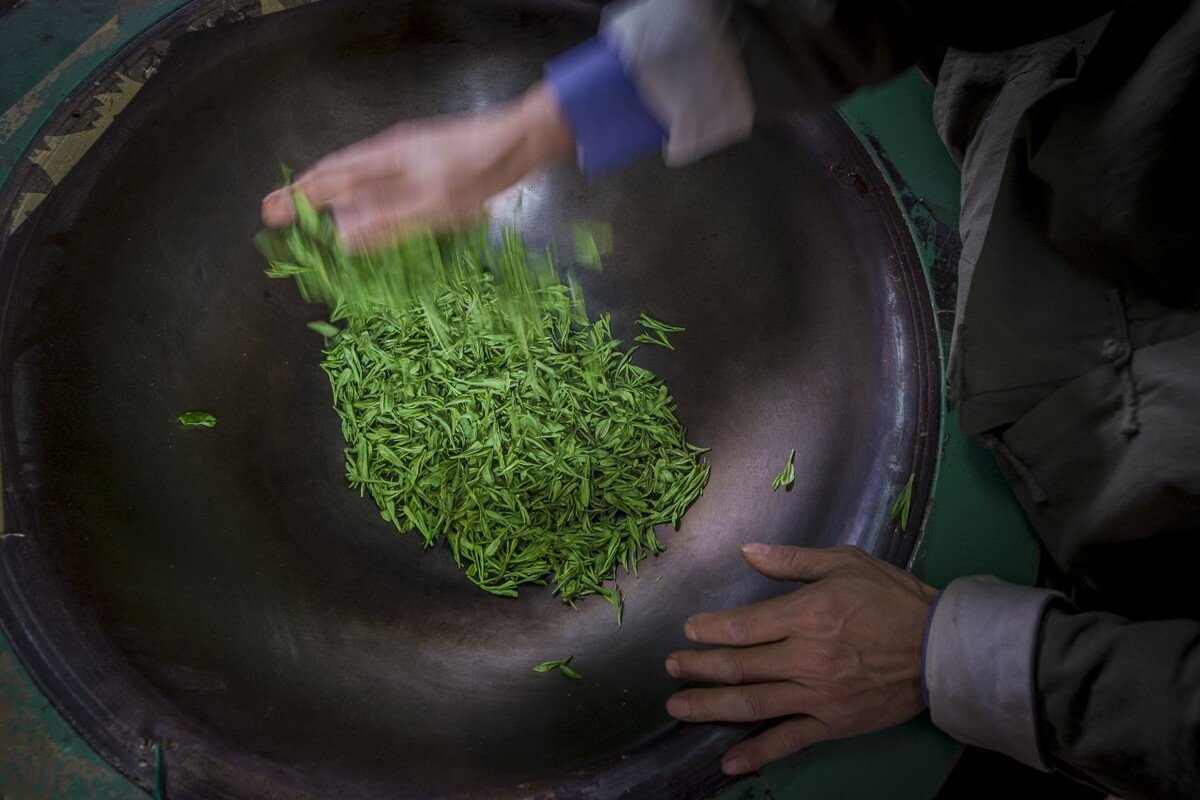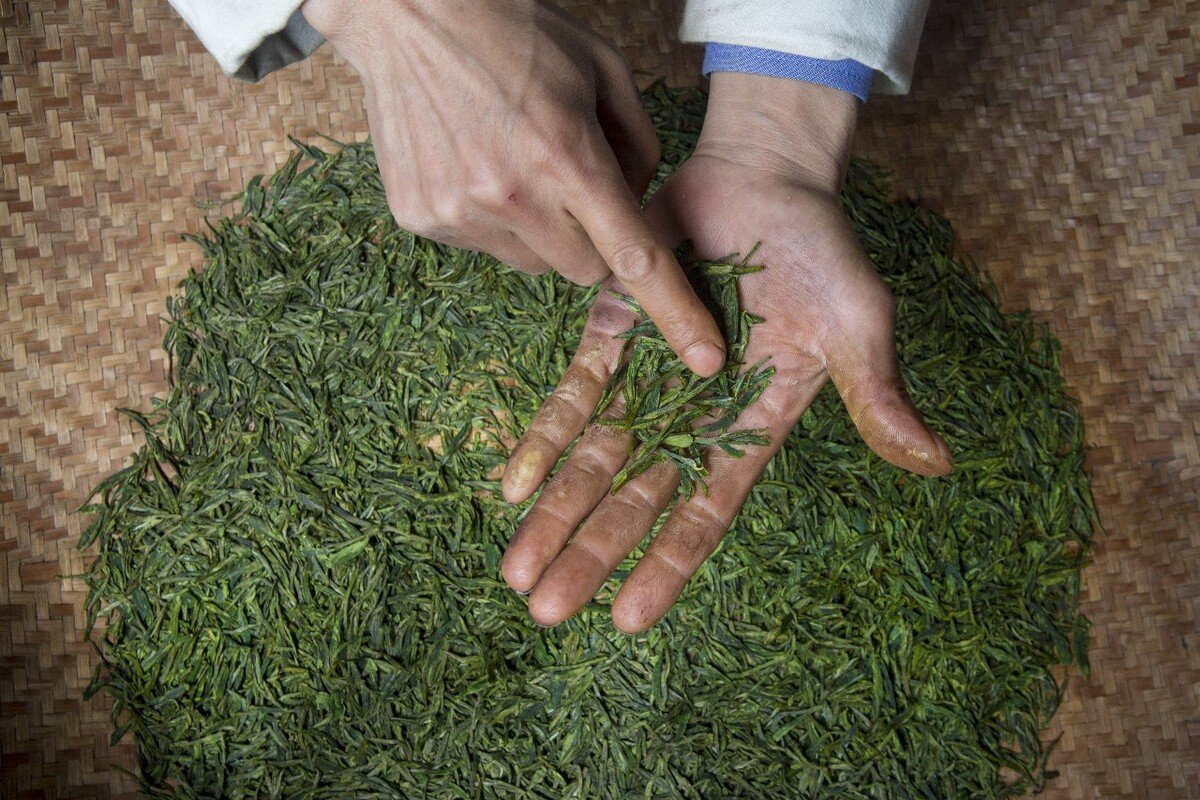Longjing tea, one of China’s traditional famous teas, has been renowned both at home and abroad for its unique production process and excellent quality since ancient times. This green tea, produced in the West Lake district of Hangzhou City, Zhejiang Province, has its unique quality characteristics due to its unique growing environment and meticulous production process, which are characterized by its green color, fragrant aroma, rich taste, and beautiful shape. In this article, we will discuss the production process of Longjing tea in detail, allowing you to experience the charm of this traditional craft.
1. Picking
The picking of Longjing tea is the first step in the production process and is also a crucial link. Only the tips of the young leaves measuring 1.2-1.5cm in length are picked, and it takes about 35,000-38,000 tips to make one pound of finished tea. Due to high temperatures, frequent rainfall, and limited sunlight during the spring tea season, picking starts later than usual, usually around the time of Qingming Festival. The picking standard is one bud and one leaf that has just begun to unfurl or one bud and two leaves that have just begun to unfurl. Such tender leaves are rich in tea polyphenols, amino acids, and other beneficial substances, and are crucial to producing high-quality Longjing tea.
2.put the tea out to dry
The newly picked buds need to be evenly spread out on bamboo mats or bamboo trays for air-drying. This step is to allow the tea leaves to naturally cool down, release excess moisture and heat, and promote the transformation of internal substances, laying a foundation for the subsequent roasting process. During the air-drying process, the tea leaves will gradually soften, the leaf color will change from bright green to dark green, and a faint fragrance of fresh grass will be released.
3.After that, it’s stir-drying to take the moist before stir-drying them again
The purpose is to destroy the enzyme activity in tea leaves at high temperature to prevent further oxidation and keep the tea green and fresh. Traditional pan-frying is used for this purpose, but now mechanical pan-frying is also used. During the frying process, the firepower and frying time need to be controlled to achieve the effect of even heating and rapid water evaporation. The fried tea leaves have a bright green color and emit a rich fragrance. The pot temperature is controlled between 100-120°C, 200g of fresh leaves are taken, and the four techniques of “lifting, shaking, tossing, and pressing” are used together to pan-fry, shape, and finish the tea leaves in about 20 minutes. A half-finished product weighing about one ounce and 70% dry can be taken out of the pot. For one pound of dry products, the pan-frying process only takes 160-200 minutes.
4.Tea leaves formation
The formation of tea leaves is a key step in the quality formation of Longjing tea, and it is also the most distinctive part of the tea-making process. This step mainly involves using hands or manual techniques such as squeezing, shaking, dragging, and stacking to shape the tea leaves. During the tea leaf formation process, the tea leaves gradually become flat and smooth, taking on a unique “flag-gun” shape. At the same time, by varying the techniques used, the tightness and taste of the tea leaves can be adjusted, allowing the tea leaves to reach their optimal quality state.
5.Stir-frying tea
Pan-frying tea leaves is the final step in the process of making Longjing tea, and it is also an important step in determining the quality of the tea. This step involves pouring the rehydrated tea leaves into a wok to further shape and dry them, thereby achieving the desired form. During the frying process, the temperature and time must be controlled, and various techniques such as grasping, pressing, rubbing, and pushing are used to achieve the desired effect of flat, smooth, and hairless tea leaves. After the tea leaves have been pan-fried, they have a pleasant aroma and break easily, indicating that their quality has reached its optimal state.
6.Screening and Sorting
Tea leaves need to be sorted and processed to remove yellow leaves, tea dust, etc. to make the finished product even in size. After sorting, the tea leaves are processed through a straightening machine to straighten out the larger tea leaves that were screened out and improve the uniformity and appearance of the finished product. Finally, the finished product is packed into packages weighing 0.5 kg each or other weight packages for separate storage and transportation for subsequent storage and transportation.
7.Storage
The storage of Longjing tea is also an important part of the production process. During storage, it is important to pay attention to moisture, mold, and odor problems to ensure the quality and taste of the tea. At the same time, to remove excess moisture and impurities from the tea and improve its fragrance and taste, the tea needs to be “greyed”. After being greyed, the tea has a stronger fragrance and a richer taste, making it the best choice for enjoying Longjing tea.
In summary, the production process of Longjing tea is a sophisticated traditional craft that requires strict picking standards, meticulous processing techniques, and unique craftsmanship to produce high-quality Longjing tea. By understanding and mastering the production process of Longjing tea, we can better appreciate the charm of this traditional tea and experience its unique quality and taste.



